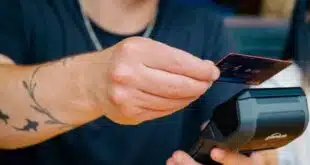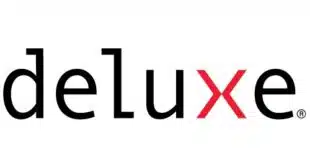By Jim Daly
@DTPaymentNews
It’s in its infancy, but the Internet of Things, or IoT, will represent a $14 billion revenue opportunity globally by 2020 for payments firms smart enough to capitalize on it, according to research firm IDC Financial Insights.
“That is a very conservative estimate,” James Wester, research director of worldwide payment strategies at Framingham, Mass.-based IDC, tells Digital Transactions News.
Wester and Michelle Tinsley, director of mobility and secure payments in the Retail Solutions Division of chip maker and business software provider Intel Corp., spoke about the IoT’s potential Thursday to an audience at the Electronic Transactions Association’s Strategic Leadership Forum in Palm Beach, Fla.
Just exactly what the IoT is and what it can do is somewhat fuzzy for many people. But one example is the Internet-connected Samsung refrigerator that MasterCard Inc. demonstrated earlier this year, that can detect when food items are getting low, then order and pay for them.
An example Wester pointed out is a so-called smart electric meter in a house that not only reports to the electric company how much juice the home used in a month, but also pays the bill. “A lot of these ‘things’ are going to have to connect to financial services,” Wester said.
Wester defined the IoT “as an aggregation of endpoints that are uniquely identifiable” and communicate over an Internet Protocol network “using some form of automated connectivity, whether locally or globally.”
The worldwide installed base of IoT devices already numbered 12.1 billion in 2015 and will grow to 30.3 billion by 2020 for a compounded annual growth rate of 20.2%, according to IDC. Those figures include wearable devices, various household appliances and items, automobiles, and industrial components.
Spending to develop the IoT will total $1.5 trillion globally in 2020, IDC estimates. “It is a massive, massive area of investment,” said Wester.
Many companies are looking to the IoT to reduce operating costs and learn more about customers’ desires, according to Tinsley. For example, a clothing retailer selling garments with IoT tags could track how many times a particular item was tried on, and why it may not be selling, she said. Or, in the case of a hot seller, the tags could tell the retailer early on that it should replenish inventory.
“There’s very real operational savings to be had,” she said.
But with a few notable exceptions such as Samsung’s refrigerator, not many IoT devices have payment functionality yet. That’s coming, according to Tinsley and Wester, who noted that the $14 billion payments opportunity is net of credit and debit card interchange.
But the revenue opportunity will be different from a merchant greenfield in which electronic payments make big inroads into a cash- or check-dominated segment, as debit cards did in grocery stores beginning in the 1980s.
“I don’t know if it does,” said Wester when asked if the IoT presents an opportunity for entirely new electronic payments. “For the short term it’s not going to be net new transactions.”
Instead, first-generation IoT payments will consolidate many existing transactions now flowing through any number of processors. “You’re going to see fewer providers in the background,” Wester says.
The field might become dominated by value-added resellers (VARs) and related companies that provide application programming interfaces (APIs). Their opportunity is in creating software-based platforms that make it simple for utilities, manufacturers and others firms to bundle transactions and integrate payments with whatever Web-based services they offer to consumers and businesses.
Over time, the developing IoT will automate many payment decisions for consumers, Wester predicts.
Even without massive new transaction volume, payments companies will have opportunities to provide data-related services, including security, to utilities and other firms in the IoT space, according to Wester. But many payment firms haven’t yet scoped out the market opportunity. “I think the payment industry has been late in understanding what the IoT is,” he says.
Interest in the IoT is growing, however. “The networks, they get it, because MasterCard and Visa have both been looking at the Internet of Things,” Wester says. But many firms with whom the networks work aren’t as informed, he adds.





